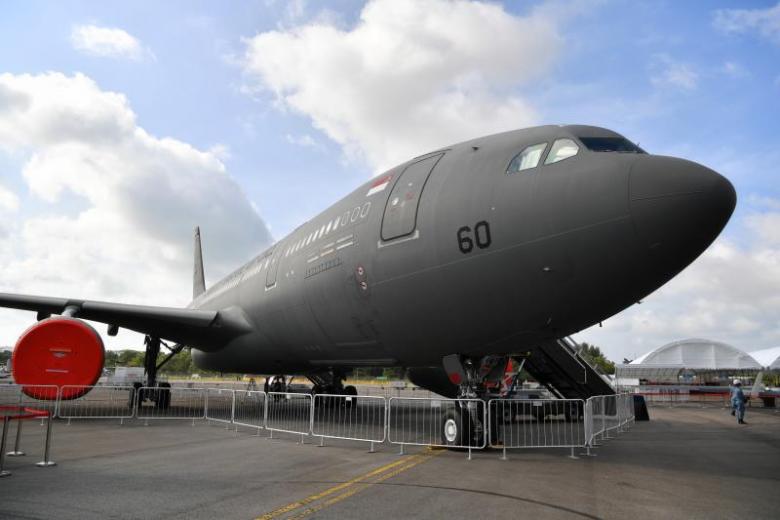SINGAPORE - Singapore's Multi-Role Tanker Transport (MRTT) aircraft could in the future conduct fully-automated refuelling operations in the air, should a collaboration with Airbus come to fruition.
The Smart MRTT programme will develop, certify and implement automatic air-to-air refuelling capability for these Republic of Singapore Air Force (RSAF) planes, as well as deliver improved maintenance solutions, said an Airbus statement on Wednesday (Feb 12).
Under the agreement, one RSAF MRTT will take part in the programme, including flight tests and certification. The flight test campaign has started, said Airbus, and certification is targeted to be achieved in 2021.
Airbus head of military aircraft Alberto Gutiérrez said in a statement: "With this agreement, the Singapore air force leads the evolution of the A330 MRTT, helping us to bring new hands-off capabilities to the benchmark of next-generation tanker operations."
The MRTT, the latest aircraft of the air force, was delivered to Singapore in 2018. It took part in its first oversea exercise in Idaho, United States, in September 2019.
It offers improved endurance, cargo and passenger capacity compared with the aging KC-135R aerial tanker that it replaced.
Among its capabilities is conducting refuelling operations to fighter jets in the air, which allows the jets to take on longer missions in a single flight.
Airbus said on Wednesday (Feb 12) the automatic air-to-air refuelling system requires no extra equipment on the receiver.
The system, it added, was intended to reduce operator workload, improve safety and the rate of fuel transfer in operational conditions.
Elaborating on the automated process, Airbus said once activated by the operator, the system becomes fully automated and starts to transfer fuel on contact with the receiving plane. This is monitored by the operator.
If there is an anomaly, the system is able to disconnect and clear the boom, which is used to transfer the fuel, away from the receiver.
"The (automated air-to-air refuelling) development paves the way (for) a fully autonomous aerial refuelling operation," added Airbus.
Currently, Singapore's MRTT operators control the boom when fighter jets move in to connect with it for fuel in the air. The MRTT's system guides the operator in ensuring the contact is maintained during fuel transfer.
Airbus said it achieved the world's first automated contact with a boom system in July 2018, when the company's A-310 development tanker performed seven automated contacts with an MRTT from the Royal Australian Air Force.
In terms of maintenance, improved maintenance equipment will allow the ground crew to troubleshoot directly from the aircraft's cockpit. This upgrade means that ground tasks can be resolved more quickly, said Airbus.


